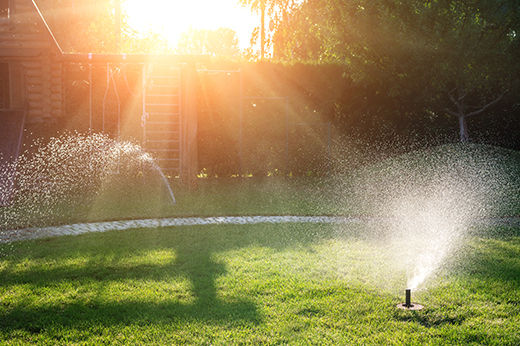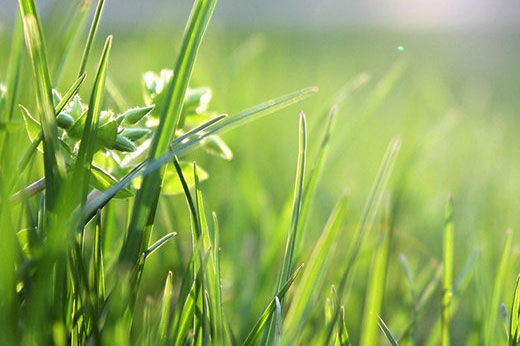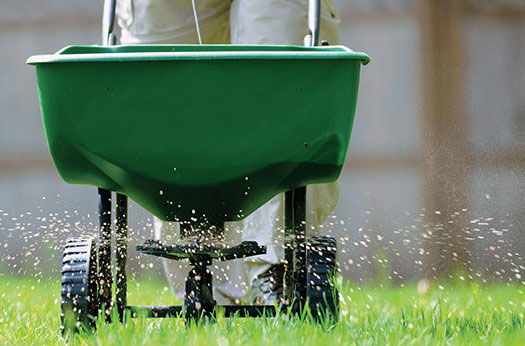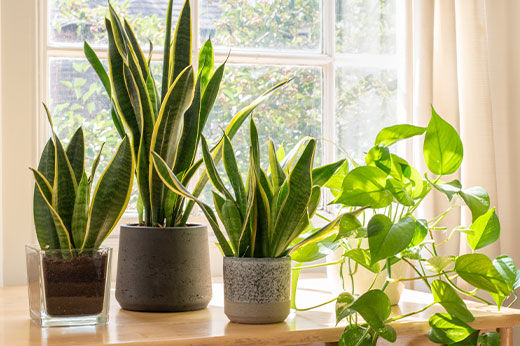While do-it-yourself projects can be fun and fulfilling, there is always a potential for personal injury or property damage. We strongly suggest that any project beyond your abilities be left to licensed professionals such as electricians, plumbers, and carpenters. Any action you take upon the information on this website is strictly at your own risk, and we assume no responsibility or liability for the contents of this article.
Designing, Installing, and Replacing Mulch
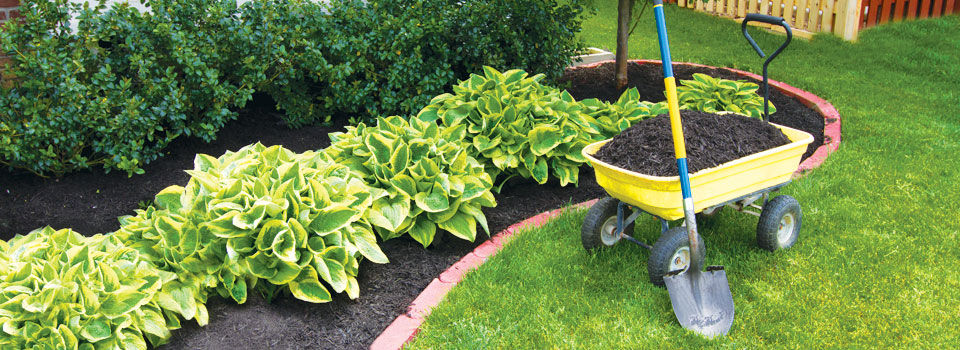
Mulch is beloved when it stays in place yet often maligned when it gets out of bounds. Careful selection of the right mulch for each situation is the key to keeping mulch where you want it. There’s no need to call in a landscaping crew to design, install, and maintain mulched areas. Whether you want neat-looking flowerbeds, crisp pathways, or just need to cover some bare soil, there’s a mulch to fit the situation.
Selecting Mulch Material
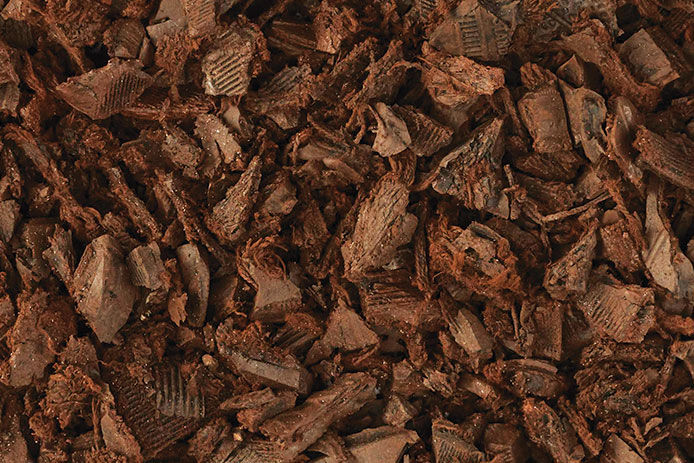
The main consideration for any mulch material is its weight. This is what determines whether a particular mulch will stay in place despite wind and rainfall. In tough areas with high winds and heavy rain, only gravel and other rock mulches will stay in place. Heavier mulches, like large chunks of bark or shredded wood, should resist most displacement problems for most parts of the country. If the area is sheltered by a structure or tree cover, lighter materials like coco coir, pine straw, or fine bark chips may work just fine.
Of course, aesthetics are also a major question when selecting mulch. Yet if looks are the only factor considered during the design stage, the mulch is likely to cause annoyances later or completely fail to cover the desired area. So first, start by selecting a basic material based on weight and texture, then move on to finding the right color. Mulch colors work best when matched to a single part of the exterior or landscape design, such as the trim on the house or the roof color.
Answering the Question of Edging
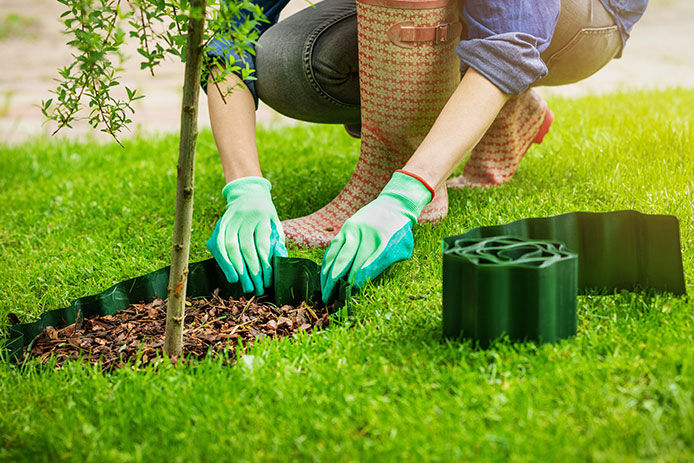
Almost any type of edging will work to contain mulch and keep it from leaving a bed or area. However, heavier and thicker-piled mulches need taller edging than light materials and thin layers. Stacked blocks or stones, plastic or metal edging, bamboo edging, and bricks all work well for holding back heavier mulch that tends to slide. For lighter materials or choices like gravel, all you may need is a trimmed edge along the lawn to keep mulch from migrating. As long as there’s some established edge between mulched and turf areas, you should see good results in keeping them separated.
Watch out for Mulch Near Trees
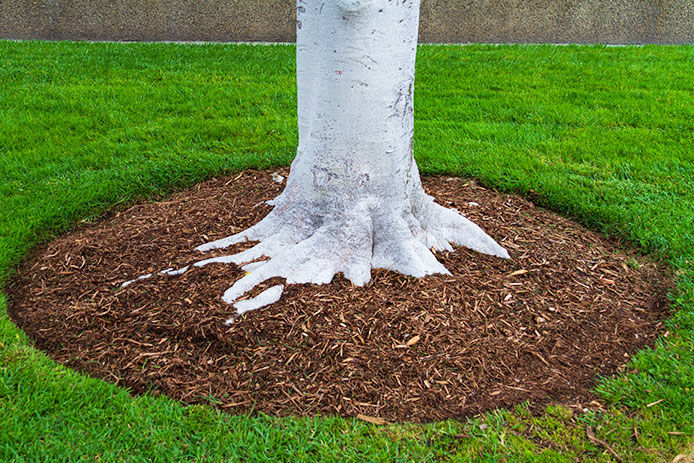
Tree rings have long been popular in colonial and English garden-inspired landscapes in particular. However, they’re not great for promoting good tree health. While mulch can help young and established trees alike better cope with temperature changes and short-term droughts, they can also hurt when piled too eagerly around the trunk. Trees have a curve at the base, known as the root flare, that needs to stay exposed, above all soil and mulch. Leaving just a few inches of space between the tree’s trunk and any mulch can help tremendously. Try a doubletree ring with a large outer edge to contain the mulch and a matching smaller inner collar to protect the tree.
Spreading Mulch the Easy Way
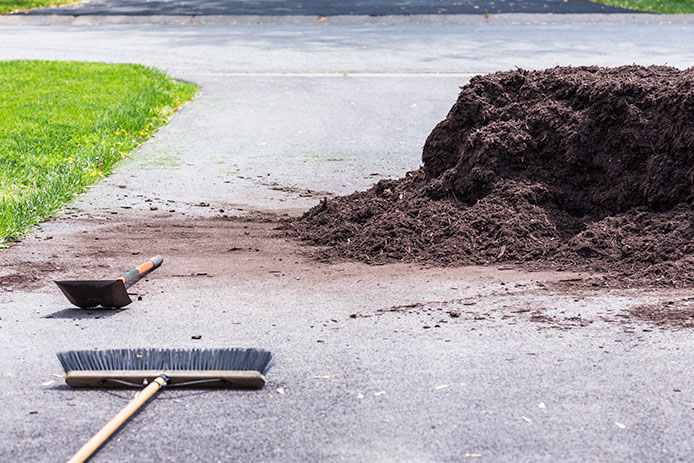
First, start by requesting the delivery as close to the areas you want to cover as possible. Strategizing placement of mulched beds or areas can make it easy to get mulch delivered close at hand for fast spreading. A driveway is usually the easiest place to dump a load of loose material since it won’t risk killing your grass as you move it around. Rent or buy a sturdy wheelbarrow you find easy to use. You’ll also want a square-tipped shovel and a leaf rake.
Load up a wheelbarrow with mulch, then take it to your first bed. Dump the load near the center where it won’t smother any plants, then use the rake to spread the majority of the mulch around. The square-nosed shovel is best for lifting smaller amounts of mulch to fill in around plants and smoothing areas where rake marks are evident. It can also help define the edges in areas where turfgrass may still overlap the bed. A pitch fork is a good idea if wheat or pine straw is being spread, especially around delicate plants.
Deciding When to Replace or Refresh Mulch
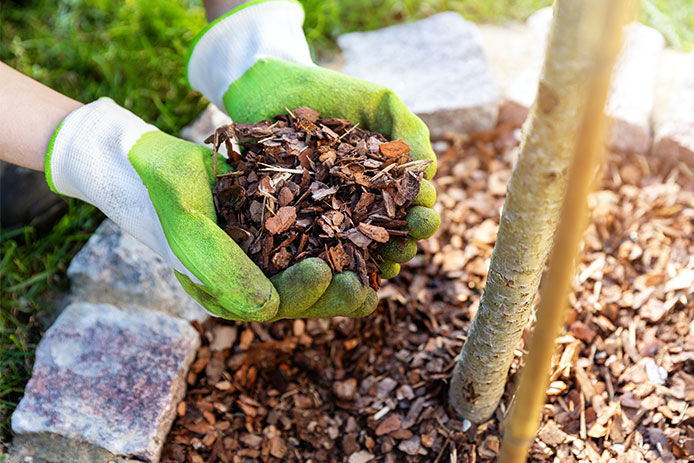
Natural mulch materials like bark chips and shredded wood break down over time, helping enrich the soil. However, this means your mulch will settle and shrink, eventually revealing bare soil. Most decomposing mulch products last between 1 and 3 years before visually losing their appeal. This depends largely on the climate, with wetter and warmer climates losing mulch faster. Raking away the old mulch is only necessary if you want to switch materials. If you’re just refreshing the same kind of mulch, add it on top to help reduce how much is needed. Of course, removing the mulch also gives you a chance to aerate and refresh the soil if needed.
Mulch is a part of any healthy landscape or garden. It protects plants from stress and helps hold moisture in the soil. However, you’ll rarely need more than 3 or 4 inches of mulch for most applications. Focus on using the right material rather than just more of it to get the results you want.
